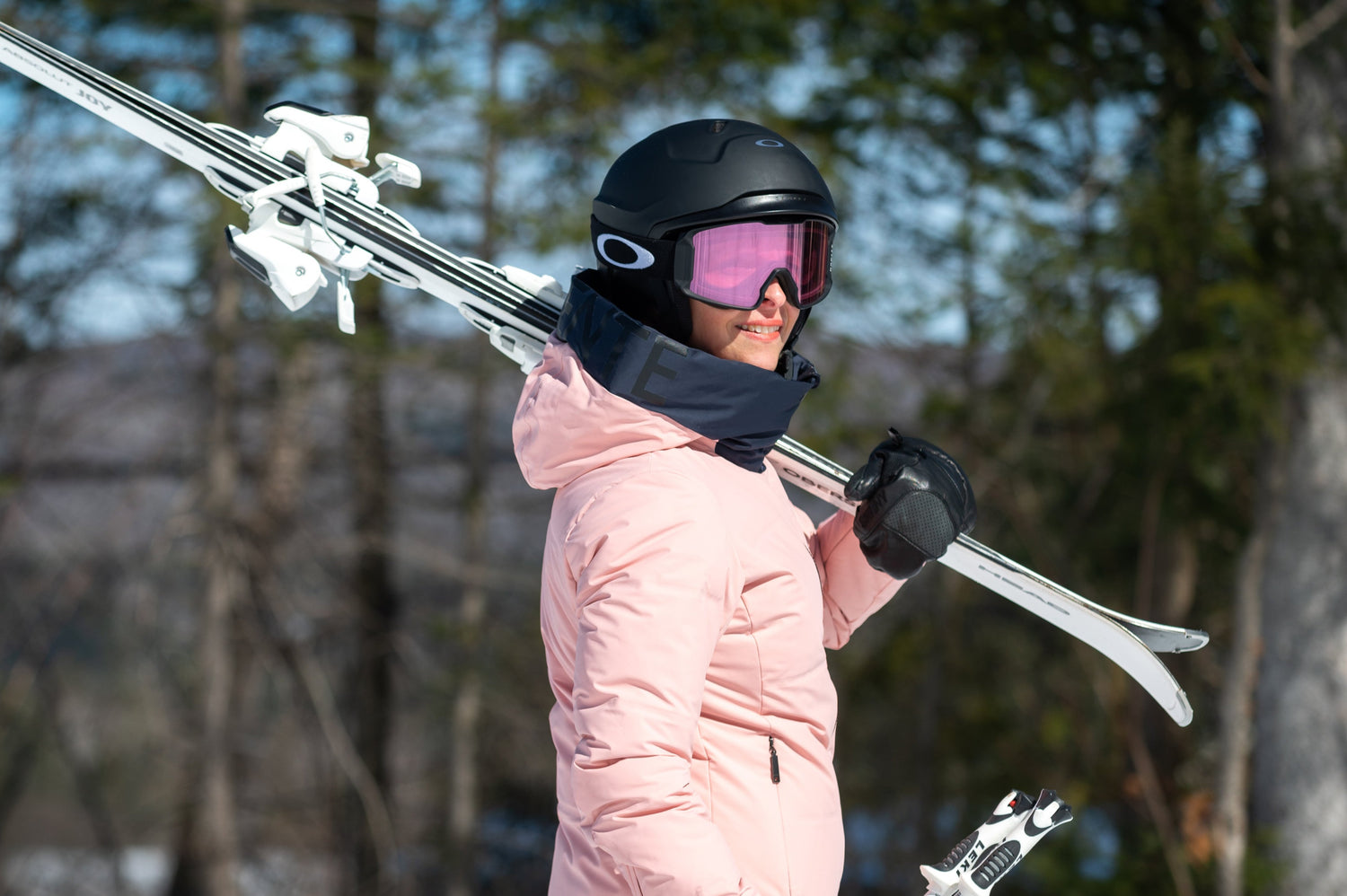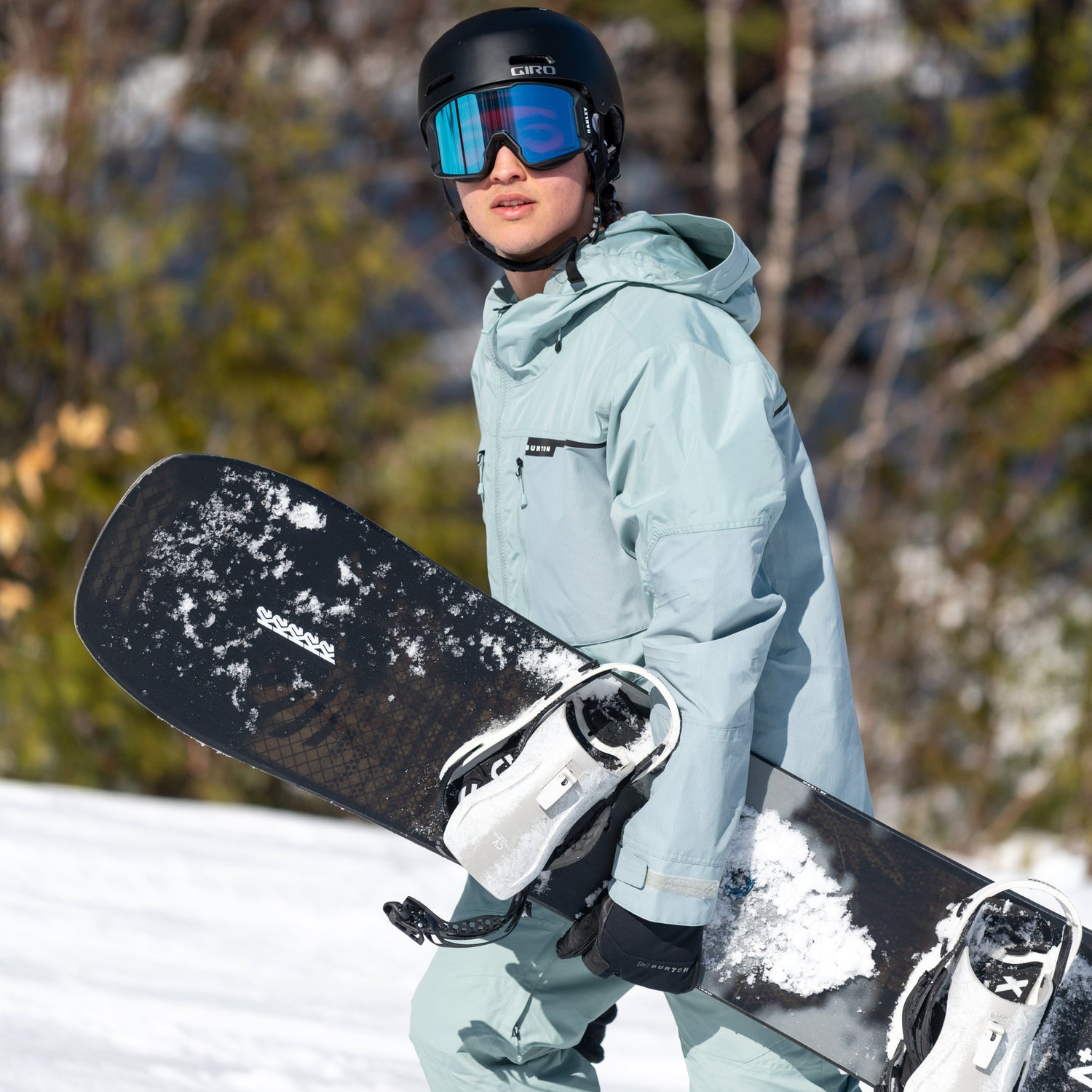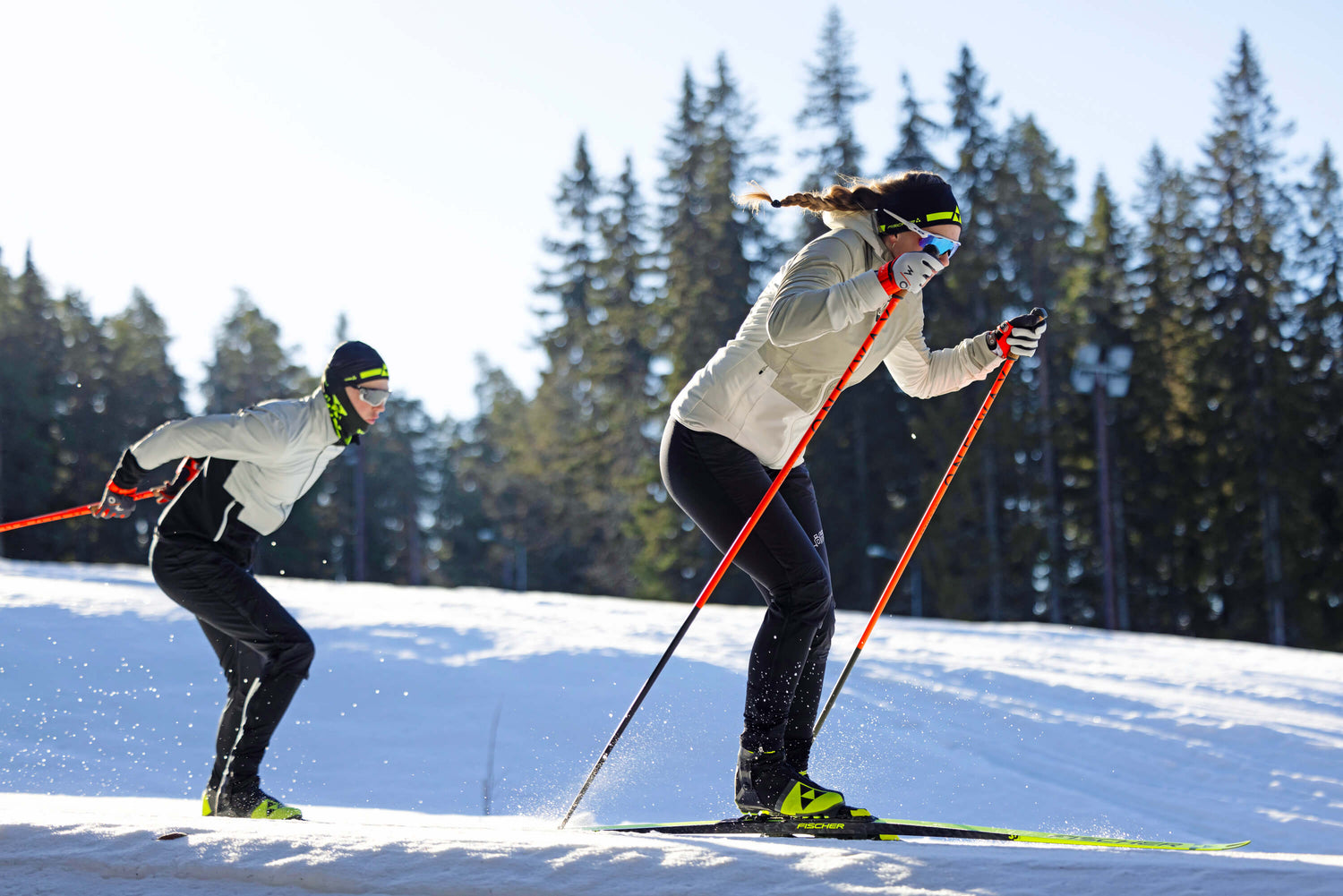Cross-Country Skiing Techniques
There are three types of cross-country skiing. Each requires different gear, skill sets, and fitness levels.
Classic Cross-Country Skiing
Classic skiing is the original technique in modern cross-country skiing. Skiers kick and glide in parallel groomed tracks. They propel themselves forward with their poles and by pressing the ski down (“kicking”) to engage its kick zone with the snow. While it can be an intense workout, this technique also lends itself to a leisurely pace for those who want to spend some contemplative time outdoors.
There are two categories of classic cross-country skis. Cross-country touring skis are recreation oriented; they’re designed for people who want to have fun and get some exercise. They are usually softer skis that require less technique and force. They’re also relatively wide and have a sidecut (i.e. an hourglass shape when looking at them from above) for more stability and control. That said, all classic skis must be less than 60 mm wide so they can fit into groomed tracks (usually 68 mm).
Race or performance-oriented skis are javelin-shaped, stiffer, lighter, and narrower (usually 44 or 45 mm). All these qualities make them less forgiving, so they’re aimed at seasoned skiers—racers or those who just love going fast.
To learn more about how to choose classic cross-country skis, read our article “Choosing Your Classic Cross-Country Skis.”

Skate Skiing
Skate skiing developed into a separate discipline in the 1980s, gaining widespread recognition after Bill Koch used the technique to win the 1982 Cross-Country World Cup. In a side-to-side movement resembling ice skating, skiers push themselves forward with long poles and the edges of their skis. This technique requires groomed trails with a corduroy pattern similar to that on alpine ski trails.
Skate skiing is faster and more strenuous than classic skiing. For most people, just executing the technique with the minimum effort required to move forward is a tough workout. It’s not the leisurely shuffle through the woods that classic skiing can be. It also takes longer to master the technique enough to have fun. For these reasons, beginning cross-country skiers should usually start with classic skiing, unless they already have a high fitness level and are up for a technical challenge.
Skate skis are shorter than their classic counterparts. Those new to skating should start with softer skis and perhaps a bit of a sidecut for more stability. More advanced skiers use skis that are stiffer, lighter, and straighter for more efficiency and dynamism.
To read more about skate skiing, see our article “Cross-Country Skate Skis: A Beginner’s Guide.”

Backcountry Cross-Country Skiing
In backcountry cross-country skiing (aka off-trail cross-country skiing), skiers use the same kick and glide technique as for the classic technique. The main difference is that they don’t ski in grooves on groomed trails. These skis allow you to venture onto snowy forest roads, ATV trails, fields, or open woods. This type of skiing is best for those who seek solitude and adventure in wild places rather than speed or performance.
Backcountry skis provide a wider platform for more stability on uneven, ungroomed trails. Ski widths vary based on the intended use. The narrowest skis (59 mm to 65 at the tip) are best for skiing in areas where other people have made some tracks or on trails packed down by snowmobiles or ATVs (but of course you should stay away from trails with any significant traffic!). On the narrowest end of the spectrum, you could even do some skiing on groomed trails. Medium width skis (70 mm to 95 mm) are for those who want to break trail. The wider the skis the better they will fare in deep, powdery snow. The widest skis (above 98 mm) are for venturing into mountainous terrain and making some turns. Backcountry skis are heavier than their counterparts because they have full or partial metal edges that help you handle steep slopes and turn on downhills.
For further discussion of backcountry cross-country skiing, see our article “How to Choose Backcountry Cross-Country Skis?”
Cross-Country Ski Length
Ski length depends on your height, weight, skill level, and the ski’s stiffness. For the best fit, consult manufacturers’ size charts or stop by our store to speak with one of our experts.
The Kick Zone
The kick zone of backcountry and classic skis must have a means of gripping the snow so skiers can propel themselves forward. Competitive classic skiers use kick wax. Choosing and applying the wax based on snow conditions is a true science. The right wax makes for the fastest, most efficient skiing. Fish scales or mohair skins serve this purpose for recreational skiers. They require little preparation and maintenance. Skins can be attached to most backcountry skis to enable climbing steeper slopes.
Skate skis have no kick zone since skiers use the ski edges for propulsion. The glide zone on these skis runs from tip to tail.
Cross-Country Ski Boots
Classic
Classic cross-country ski boots have a soft sole and a flexible forefoot that allow for a comfortable stride. Beginners should look for more supportive boots, while more experienced skiers can go with lighter, more flexible ones.
Skate
Skate ski boots have a stiffer sole and upper cuff to provide more support and energy. Beginners should choose a softer boot, which will be more forgiving of technique errors.
Backcountry
Backcountry ski boots have flexible soles and forefoots like classic boots. They are higher and sometimes have gaiters to keep out snow. Stiffer soles provide more stability and control for wide skis.
Binding and Boot Compatibility
Most modern cross-country ski bindings for both the skate and classic techniques follow the NNN-compatible system, which includes NNN, Prolink, and Turnamic; they are all interchangeable. NNN BC bindings, used for backcountry skiing, are wider and not compatible with standard NNN boots (and vice versa). The older SNS (Salomon Nordic System) is not compatible with the other systems. If replacing just boots or bindings, check compatibility with your existing system.

Poles
Classic poles should fit uncomfortably beneath your armpit. Skate poles come somewhere between your nose and mouth. For backcountry skiing, telescopic poles are best because you can adjust them based on the terrain.

Ski Maintenance
Proper ski maintenance can help you avoid sticky skis and poor glide.
Before Skiing
- Regular upkeep includes cleaning waxable skis by removing old wax and applying a binder wax to the kick zone every few outings.
- Glide wax improves performance and should be applied to skate, scaled, and waxable ski bases.
- For skis with skins, use a fiberlene towel to apply a water-repellent maintenance product to prevent icing when temperatures rise above -5°C.
After Skiing
- Use a brass brush to remove oxidation and restore glide, brushing from tip to tail. For waxable and skin skis, only brush the glide zones; for skate and scaled skis, brush the entire base.
- Clean skins after each outing with a fiberlene towel.
For more information, read our article “How to Wax and Tune Cross-Country Skis?”
Shop Cross-Country Ski Accessories
How to Dress for Cross-Country Skiing
Dressing in layers is the key to comfort in cross-country skiing. This allows adding or removing garments to stay comfortable. Opt for merino wool and synthetic materials that wick moisture, and avoid cotton, which is cold when wet.
The base layer should be a form-fitting t-shirt or long-sleeved shirt. In colder weather, you can wear long underwear on your lower body. Light fleece jackets and vests or a midweight shirt make excellent mid layers. The outer layer should have a slim fit that lets you move freely. Insulated alpine ski jackets are much too hot and bulky. A windproof shell jacket or a soft-shell jacket work well.
On warmer days, you can wear yoga or running pants or tights on your lower body; when the mercury drops, shell pants or cross-country ski pants work well as an outer layer. Gloves are better than mittens because they give you the dexterity to properly grip your poles. Most people will also need to wear a light neck warmer.
To delve more into this topic, read our article “Choosing the Right Cross-Country Ski Clothing.”

Shop Cross-Country Ski Jackets
Where to Go Cross-Country Skiing?
Canada abounds in cross-country ski centres. Here in Quebec, many cities and towns have places to go skiing. Montreal residents have over 200 km of trails to choose from. Quebec City has 14 km of skate and classic trails on the Plains of Abraham. Provincial and federal parks also offer many more kilometres to explore. Among these, Mauricie National Park and Camp Mercier are two major destinations. Many small towns also boast beautiful trail networks. The Skier à fond website lists many of them. If you’re a backcountry cross-country skier, Sainte-Adèle has a well-known ungroomed trail network. Otherwise, ZECs and wildlife reserves are a good place to start in Quebec.
Read about more destinations in our article “Where Can You Cross-Country Ski in Quebec?"


